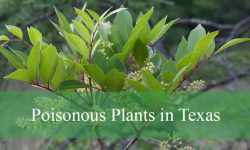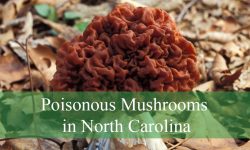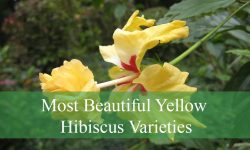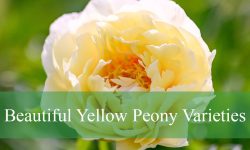Do you dream of a vibrant garden filled with colorful butterflies? Planting flowers that attract butterflies is the perfect way to create a lively and pollinator-friendly space. These beautiful blooms provide nectar-rich food sources, inviting butterflies to flutter around and enhance your garden’s natural beauty.
In this article, we will explore 35 stunning flowers that attract butterflies, each with unique colors, fragrances, and benefits. From bright daisies to fragrant lavender, these flowers will transform your outdoor space into a butterfly paradise.
Whether you’re a seasoned gardener or just starting, choosing the right flowers that attract butterflies will help support pollinators while adding charm to your landscape. Let’s dive into the best butterfly-friendly flowers and discover how they can bring life to your garden!
Different Types of Flowers That Attract Butterflies
Cornflower (Centaurea cyanus)
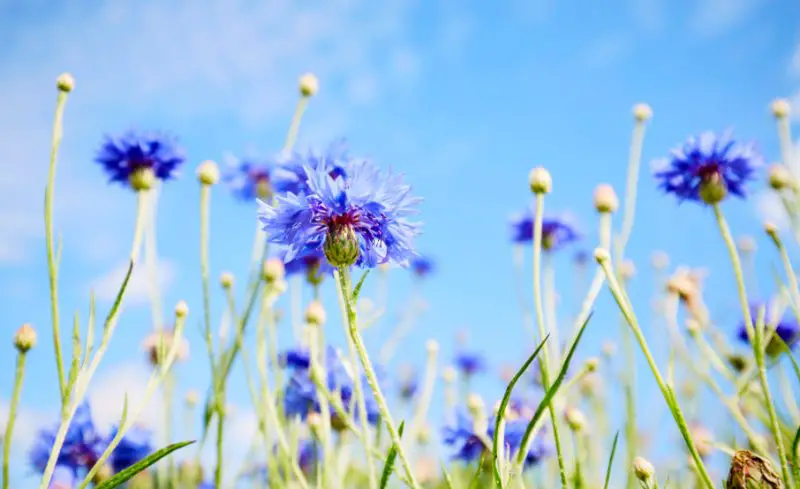
Cornflower is a bright, low-maintenance flowering plant that attracts butterflies with its vivid blue, pink, or white blooms. It is an annual that self-seeds, meaning it will return to your garden year after year without replanting. Thriving in USDA zones 2-11, cornflowers prefer full sun and well-drained soil.
Caring for cornflowers is easy, as they are drought-tolerant and require little maintenance. Water them moderately and deadhead spent flowers to encourage continuous blooming. These resilient plants grow well in wildflower meadows, borders, and cottage gardens.
Clove Pink (Dianthus caryophyllus)
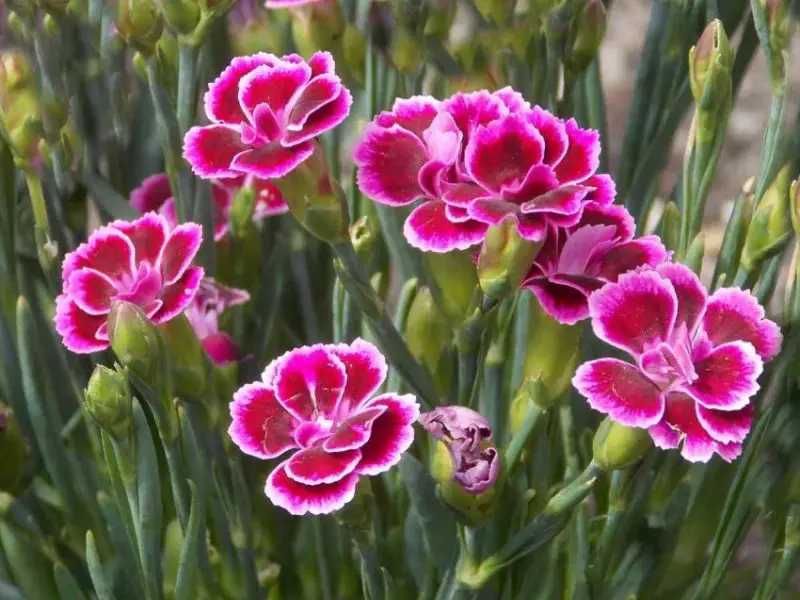
Clove pink is a fragrant flowering plant that attracts butterflies with its delicate, fringed petals. Despite the name, it comes in various colors, including red, white, and purple. The “pink” in its name refers to the notched edges of its petals, resembling cuts made by pinking shears. It thrives in USDA zones 5-9, preferring full sun and well-draining soil.
To care for clove pink, ensure good air circulation to prevent disease, water at the base to keep foliage dry, and deadhead spent blooms to extend the flowering period. It is a great addition to rock gardens and borders.
False Indigo (Baptisia spp.)
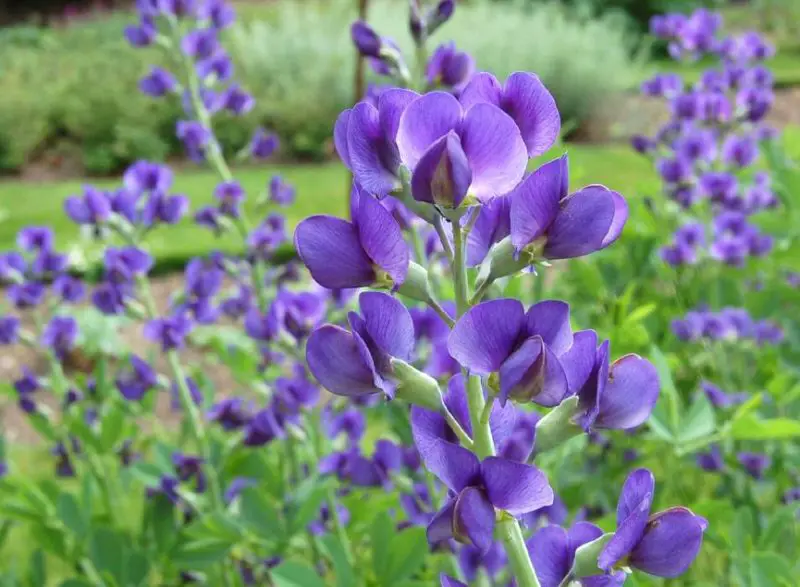
False indigo is a hardy perennial from the pea family that produces elegant spikes of blue, white, or yellow flowers. It blooms for about six weeks in early spring and summer, attracting butterflies with its nectar-rich blossoms. This plant grows best in USDA zones 3-9, thriving in full sun and well-drained soil.
Once established, false indigo is highly drought-tolerant and requires little care. Avoid frequent transplanting, as it develops deep roots. Cut back old stems in late winter to encourage new growth in spring.
Goldenrod (Solidago spp.)
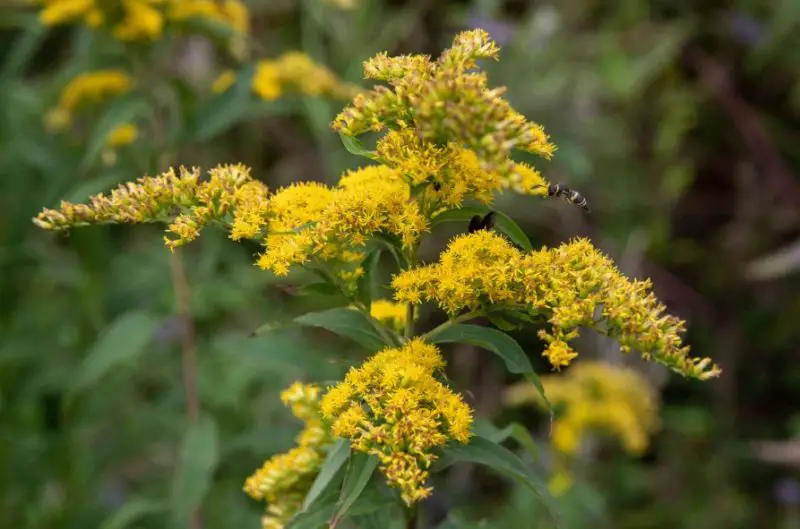
Goldenrod is a vibrant yellow wildflower that belongs to the aster family and is known for its ability to attract butterflies. It blooms in late summer and fall, providing an important nectar source when many other flowers fade. This hardy plant grows well in USDA zones 3-9 and thrives in full sun with well-draining soil.
Goldenrod requires minimal maintenance, as it is drought-resistant and adapts to various soil types. To prevent aggressive spreading, prune or divide clumps as needed. Some varieties are used in herbal medicine for their anti-inflammatory benefits.
Floss Flower (Ageratum houstonianum)
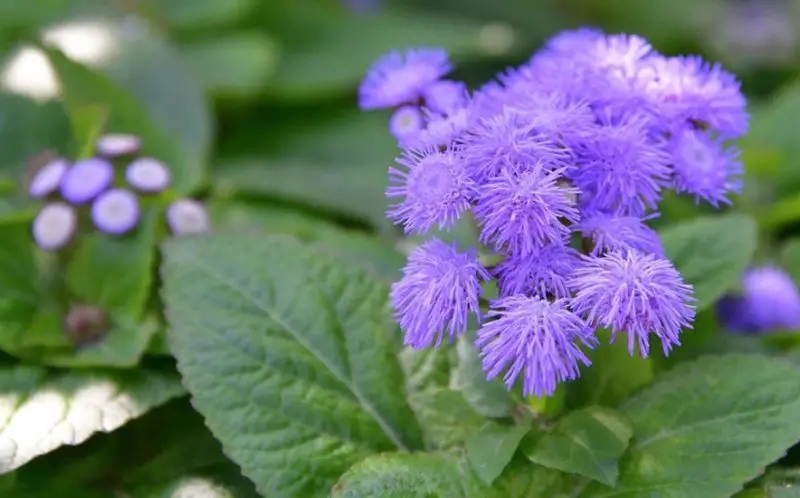
Floss flower, also known as Ageratum, is a charming plant with fluffy, pom-pom-like flowers in shades of blue, purple, or pink. It thrives in warm climates and grows as a perennial in USDA zones 10-11, but it is often treated as an annual in cooler regions.
To care for floss flowers, plant them in full sun to partial shade and water consistently to keep the soil moist. Deadheading spent blooms will encourage more flowers. They make excellent border plants and attract butterflies with their nectar-rich blossoms.
Privet (Ligustrum spp.)
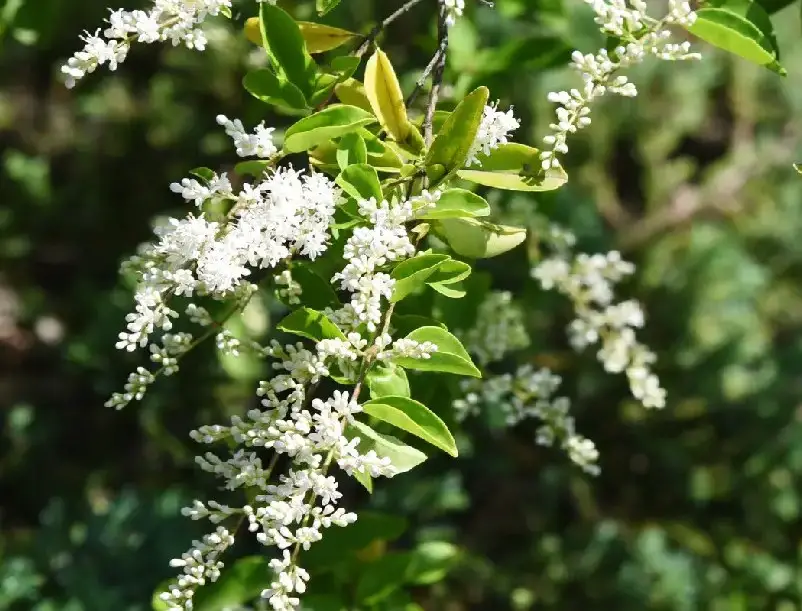
Privet is a fast-growing hedge shrub that produces clusters of ivory-white flowers in spring and early summer. Though some consider it invasive, its fragrant blooms attract butterflies and other pollinators. It thrives in USDA zones 4-8 and grows well in full sun to partial shade, adapting to various soil conditions.
Privet requires minimal care and is often used as a hedge due to its dense foliage. Regular pruning helps maintain its shape and control its spread. Water young plants regularly, but once established, they are drought-tolerant and highly resilient.
Hollyhock (Alcea rosea)
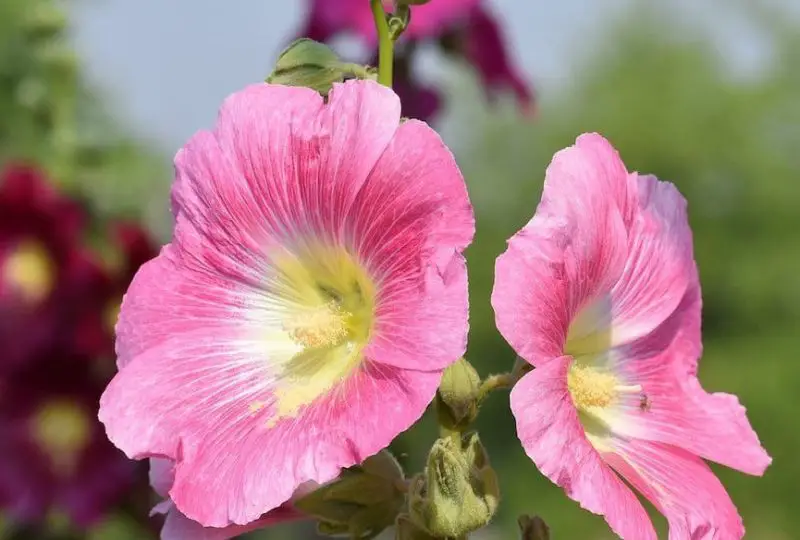
Hollyhocks are towering, mid-summer bloomers that provide nectar for butterflies and serve as a host plant for painted lady caterpillars. These tall, colorful flowers can grow between 6-8 feet, making them ideal for the back of flower beds. They thrive in USDA zones 3-8 and prefer full sun with well-drained soil.
To care for hollyhocks, stake taller plants to prevent them from bending in strong winds. Water regularly but avoid wetting the foliage to prevent rust, a common fungal disease. Deadhead spent flowers to encourage prolonged blooming.
Lavender (Lavandula spp.)
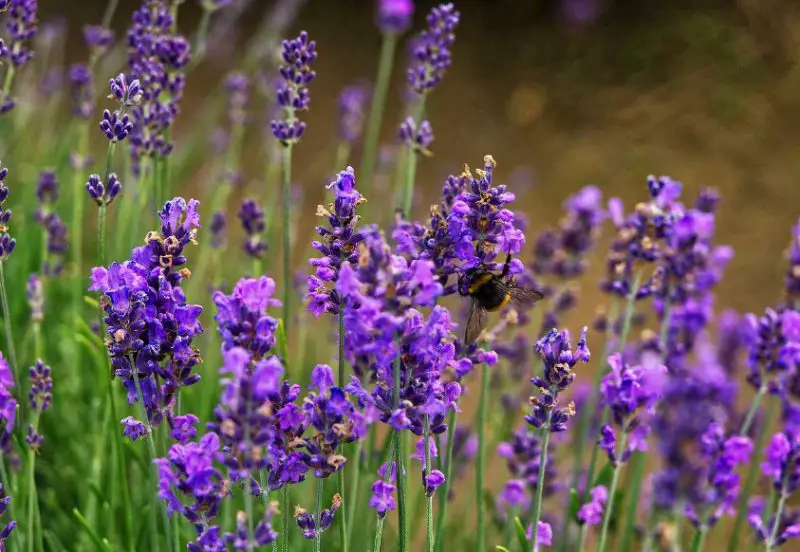
Lavender is a fragrant herb with silvery-green foliage and purple flower spikes that attract butterflies. It is perfect for garden borders and offers additional benefits—its dried flowers can be used in sachets, teas, and baked goods. Lavender grows well in USDA zones 5-9, requiring full sun and well-drained, sandy soil.
Caring for lavender is simple—water sparingly, as it prefers dry conditions, and prune after flowering to maintain a compact shape. Avoid overwatering, as excess moisture can cause root rot. This drought-tolerant plant thrives with minimal maintenance.
Daylily (Hemerocallis spp.)
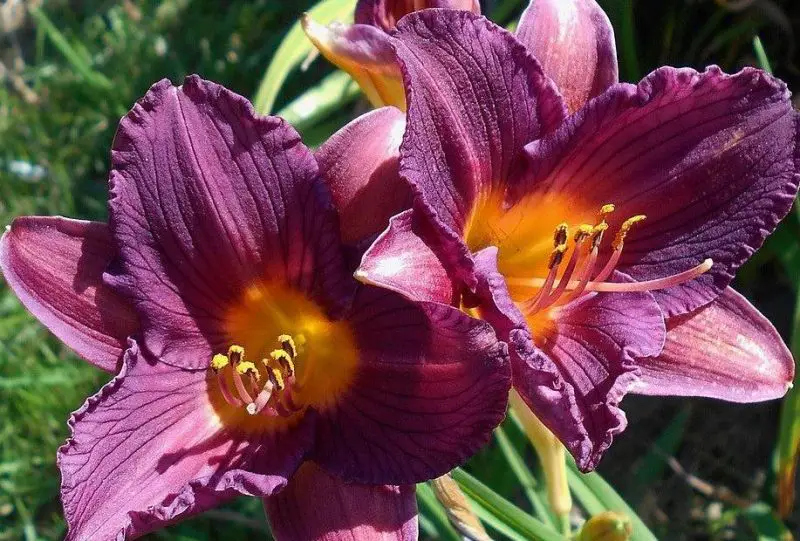
Despite its name, the daylily is not a true lily, but it attracts butterflies with its large, trumpet-shaped flowers. Available in warm hues like orange, red, and yellow, this hardy perennial spreads quickly and needs occasional dividing to maintain maximum blooming. It thrives in USDA zones 3-10 and prefers full sun to partial shade.
To care for daylilies, plant them in well-drained soil and water regularly. Remove spent blooms to encourage new flowers, and divide overcrowded clumps every few years. These resilient plants require little maintenance and bloom profusely throughout the summer.
Pye Weed (Eutrochium spp.)
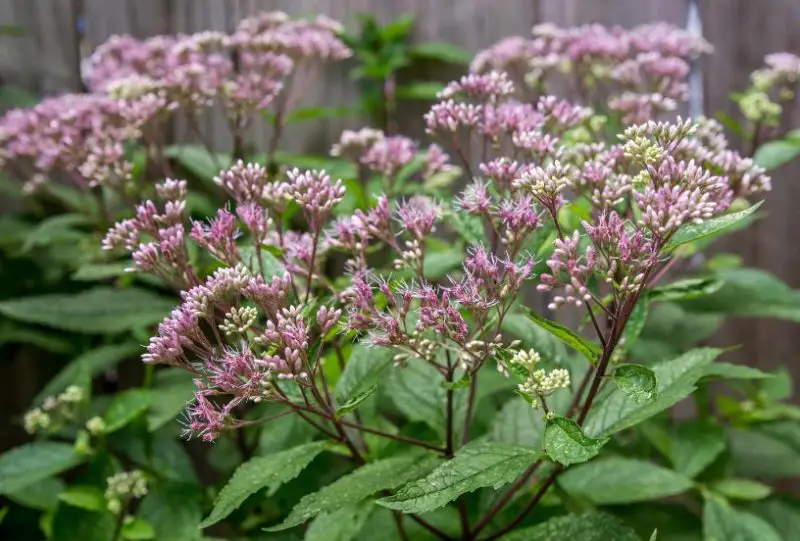
Also known as Joe-Pye weed, this tall, late-season bloomer produces clusters of pinkish-purple flowers that attract butterflies. Named after a Native American herbalist, it has medicinal benefits and thrives in meadows, wetlands, and garden borders. It grows best in USDA zones 4-9, preferring full sun to partial shade.
Pye weed requires moist, well-drained soil and occasional watering during dry periods. Cut back stems in late winter to encourage fresh growth. Its towering height makes it an excellent background plant in butterfly-friendly gardens.
Yarrow (Achillea millefolium)
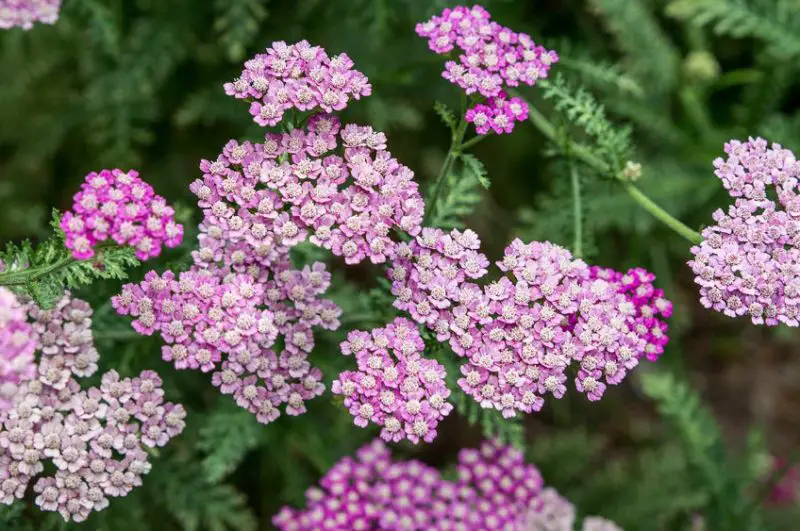
Yarrow is a hardy, low-maintenance plant that thrives in full sun and well-draining soil. Its clusters of tiny flowers come in shades of white, yellow, pink, or red, attracting butterflies throughout the summer. This perennial is highly drought-tolerant and grows best in USDA zones 3-9.
To care for yarrow, plant it in a sunny location and avoid overwatering, as it prefers dry conditions. Deadheading spent flowers encourages continuous blooming, and occasional pruning helps control its spread. This resilient plant is an excellent choice for wildflower gardens and borders.
Stonecrop Sedum (Sedum spp.)
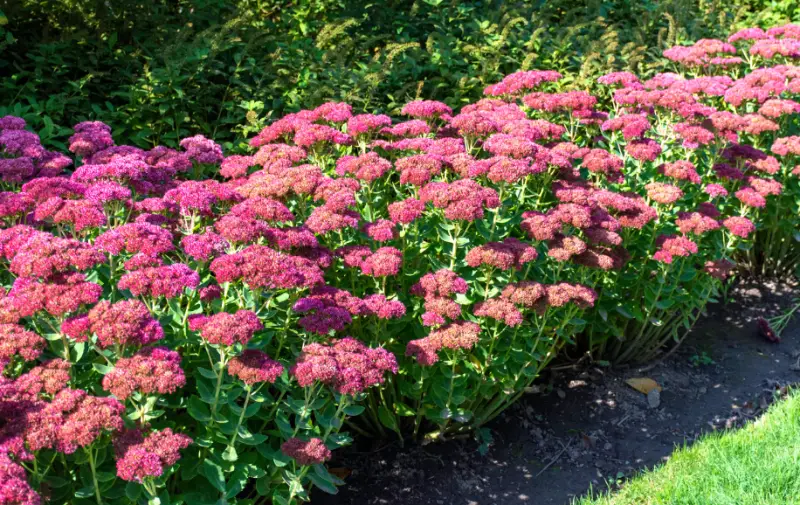
Stonecrop sedum is a succulent that thrives in arid climates and well-drained soil. Its thick, fleshy leaves store water, making it highly drought-resistant. The star-shaped flowers bloom in late summer and fall, attracting butterflies and other pollinators. It grows well in USDA zones 3-9 and prefers full sun.
Caring for stonecrop is easy—it requires minimal watering and can even tolerate poor soil. Plant it in rock gardens or containers for a striking display. Trim back stems in spring to maintain a compact shape and encourage fresh growth.
Bee Balm (Monarda spp.)
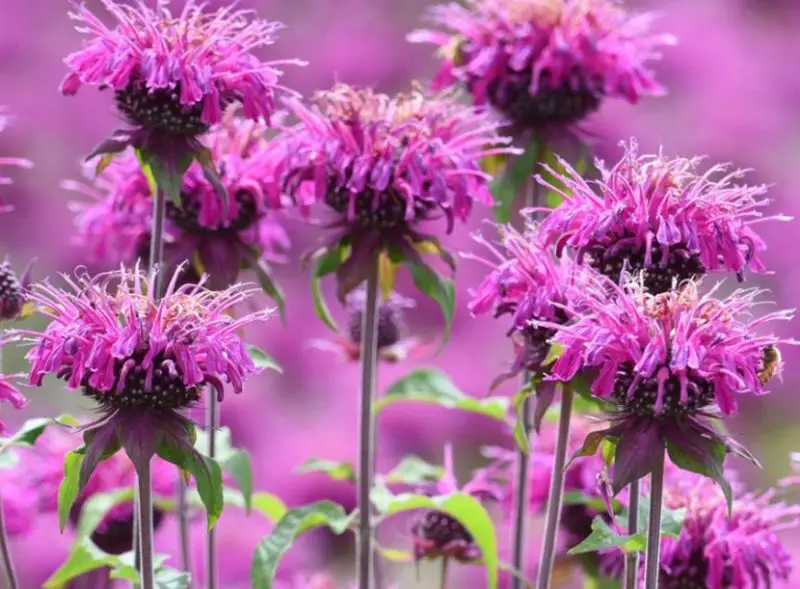
Bee balm, also known as wild bergamot, is a fragrant perennial that attracts butterflies, bees, and hummingbirds. Its bright, tubular flowers bloom in red, pink, purple, or white from late spring to summer. This plant thrives in USDA zones 4-9 and prefers full sun with well-drained soil.
To care for bee balm, water regularly but avoid soggy soil. Prune spent blooms to extend the flowering period and improve air circulation to prevent powdery mildew. Bee balm makes a beautiful addition to pollinator gardens and cottage landscapes.
Globe Thistle (Echinops spp.)
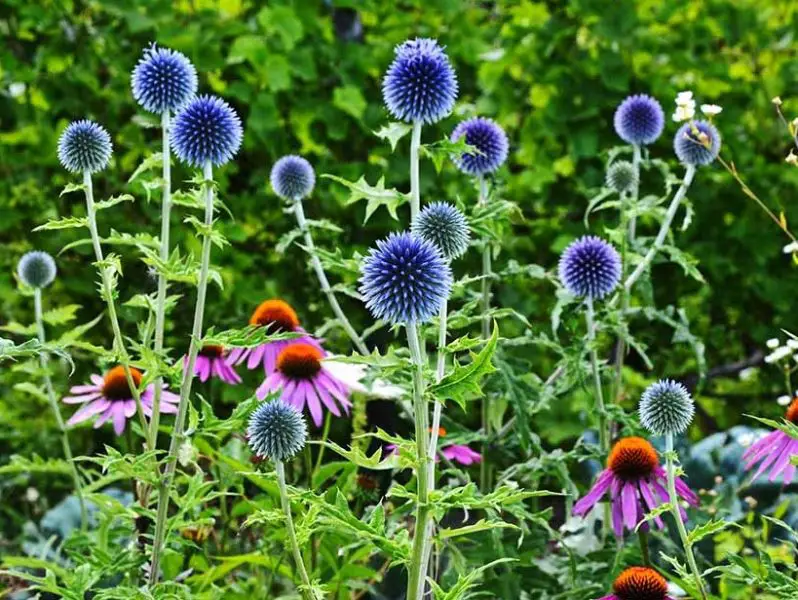
Globe thistle is a striking perennial with spiky, spherical flowers in shades of purple, blue, or white. It belongs to the sunflower family and is a magnet for butterflies. Blooming in summer, it thrives in USDA zones 3-9 and prefers full sun with well-draining soil.
This drought-tolerant plant requires little care once established. Water sparingly and cut back spent flower heads to encourage more blooms. Its unique, globe-shaped flowers make it an excellent choice for dried arrangements and ornamental gardens.
Mallow (Malva spp.)
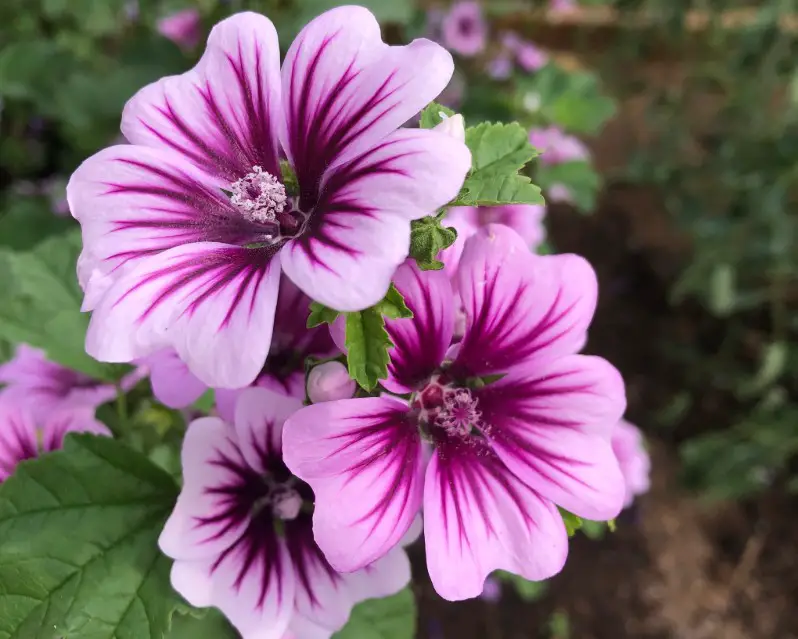
Mallow is a versatile plant that not only attracts butterflies but is also cultivated worldwide for food, beverages, and fiber. Though typically found in tropical regions, many varieties thrive in temperate climates. It blooms in shades of pink, purple, and white and grows well in USDA zones 3-9.
Mallow prefers full sun to partial shade and well-drained soil. Water moderately and prune after flowering to encourage new growth. This resilient plant is perfect for wildflower meadows, herb gardens, and pollinator-friendly landscapes.
Ninebark (Physocarpus opulifolius)
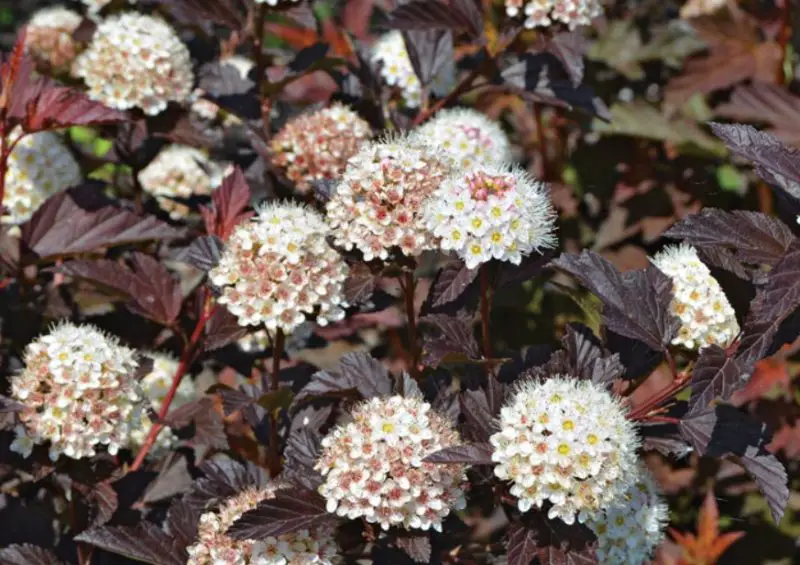
Ninebark is a hardy, flowering shrub that can grow between 6 to 10 feet tall. It produces clusters of white or pinkish flowers in late spring and early summer, attracting butterflies and other pollinators. This shrub thrives in USDA zones 2-8, preferring full sun to partial shade and well-drained soil.
To care for ninebark, prune it in early spring before new leaves emerge to encourage abundant flowering. It is drought-tolerant once established and requires minimal maintenance. Its peeling bark and colorful foliage make it an excellent choice for ornamental landscapes.
Pansy (Viola × wittrockiana)
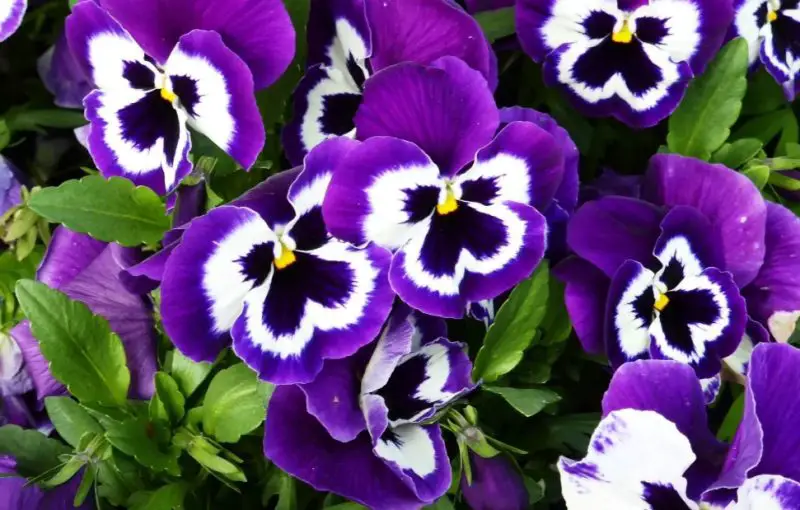
Pansies are cool-weather favorites that bloom in early spring and fall. Available in a wide range of vibrant colors, they add charm to borders, containers, and garden beds. These flowers thrive in USDA zones 4-8 and prefer full sun to partial shade with rich, well-draining soil.
To care for pansies, plant them in cooler months and water regularly to keep the soil moist. Deadhead spent blooms to encourage continuous flowering. With proper care, pansies can bloom almost year-round in mild climates.
Phlox (Phlox spp.)
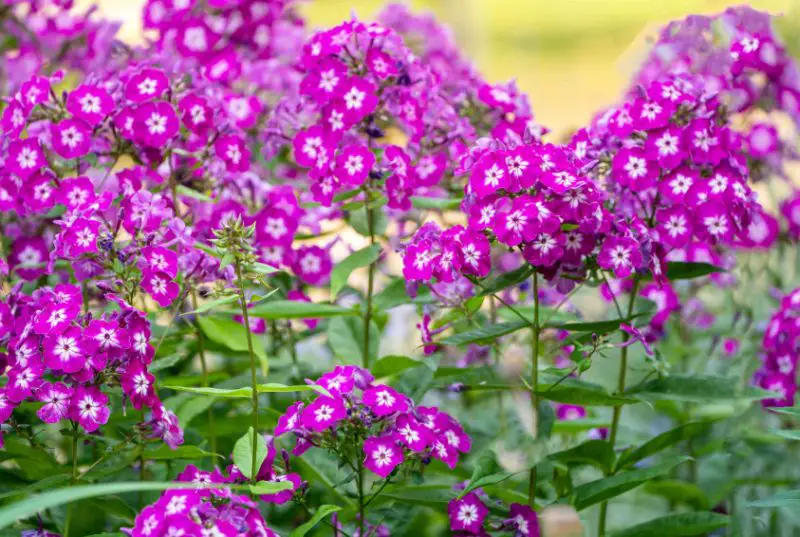
Phlox is a versatile flowering plant that comes in many varieties, from low-growing ground covers to tall species that add height to garden beds. Its fragrant, star-shaped flowers bloom in colors ranging from white and pink to red and purple. Phlox thrives in USDA zones 3-9 and prefers full sun to partial shade.
To care for phlox, plant it in well-drained soil and water regularly to keep the roots moist. Deadhead spent flowers to extend the blooming period, and divide mature plants every few years to prevent overcrowding.
Sea Holly (Eryngium spp.)
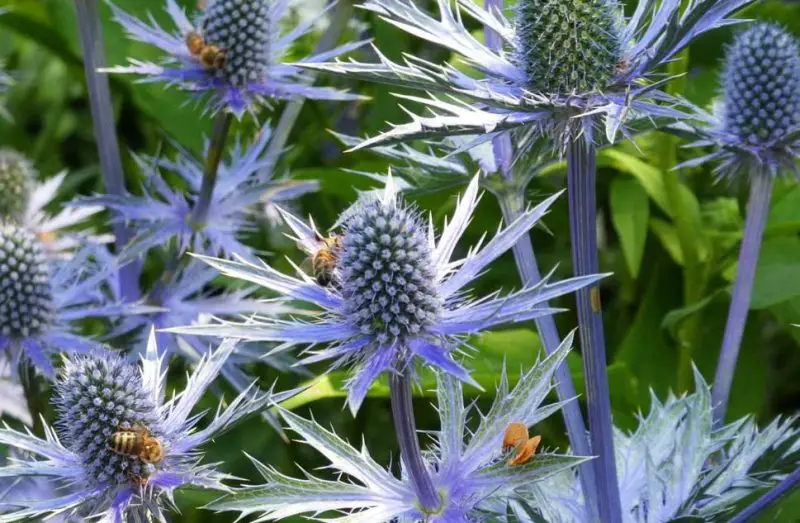
Sea holly resembles thistle, with spiky, cone-shaped flowers surrounded by pointed bracts. It blooms in shades of blue, silver, and purple from late summer to fall, attracting butterflies and other pollinators. This drought-tolerant plant thrives in USDA zones 4-9 and prefers full sun with well-draining, sandy soil.
Caring for sea holly is simple—water sparingly and avoid overly fertile soil, as rich conditions can cause floppy growth. These plants are excellent for rock gardens and dried flower arrangements.
Shasta Daisy (Leucanthemum × superbum)
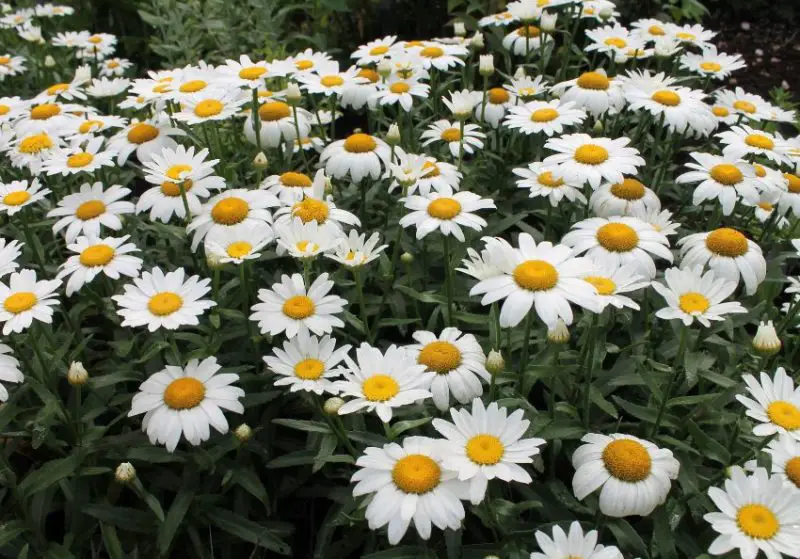
Shasta daisies are cheerful, long-blooming perennials with classic white petals and bright yellow centers. They flower from summer through early fall, attracting butterflies and adding charm to gardens. They grow best in USDA zones 5-9, requiring full sun and well-drained soil.
To care for Shasta daisies, space plants 1 to 2 feet apart to allow for spreading. Water moderately and deadhead spent flowers to encourage new blooms. Cut back foliage in late fall to promote healthy regrowth in spring.
Snapdragon (Antirrhinum majus)
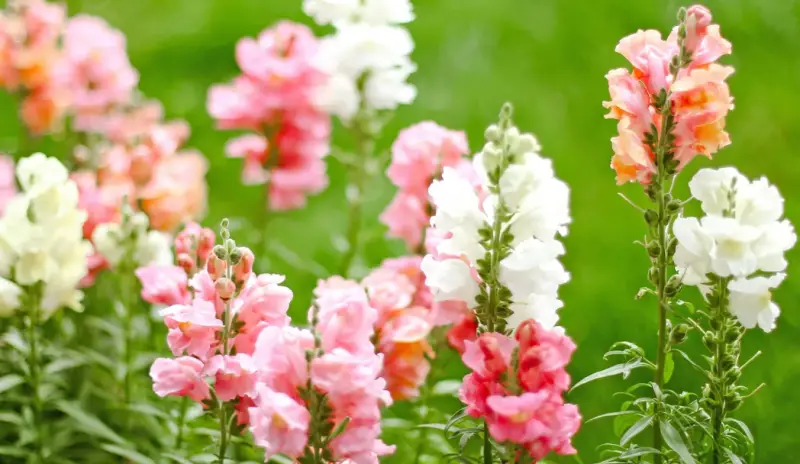
Snapdragons are vibrant, cool-weather plants that bloom in early spring and fall, adding rich color to flower gardens. Their uniquely shaped flowers come in various hues, including pink, red, yellow, and white, attracting butterflies and other pollinators. These plants thrive in USDA zones 7-10 and prefer full sun with well-drained soil.
To care for snapdragons, deadhead spent blooms to extend their flowering season. Keep the soil moist, especially during hot summer months, and provide light mulching to help retain moisture. In mild climates, snapdragons may even bloom through winter.
Trumpet Vine (Campsis radicans)
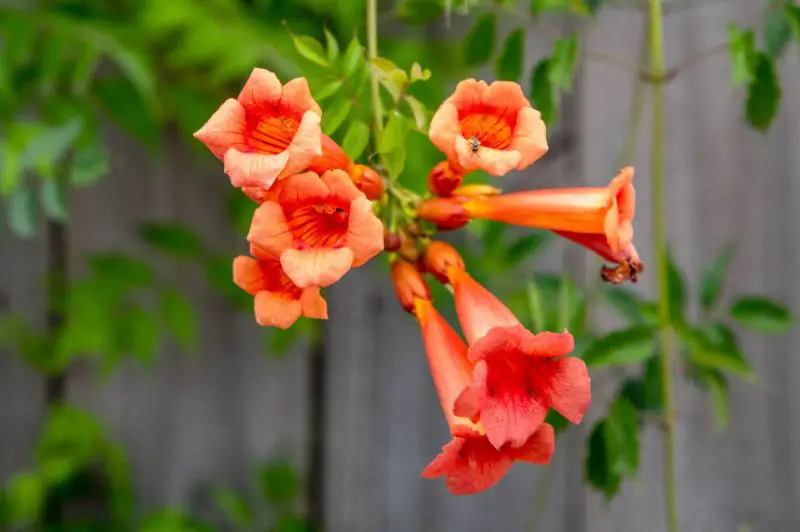
Trumpet vine, also known as trumpet creeper, is a vigorous, fast-growing climber that produces clusters of tubular flowers in shades of red, orange, and yellow. These nectar-rich blooms are highly attractive to butterflies and hummingbirds. It thrives in USDA zones 4-9 and prefers full sun with well-drained soil.
Regular pruning is necessary, as trumpet vines can grow up to 40 feet in a single season. To control their spread, plant them near a trellis or fence and trim back aggressively in late winter or early spring. Once established, they require minimal watering.
Sweet Rocket (Hesperis matronalis)
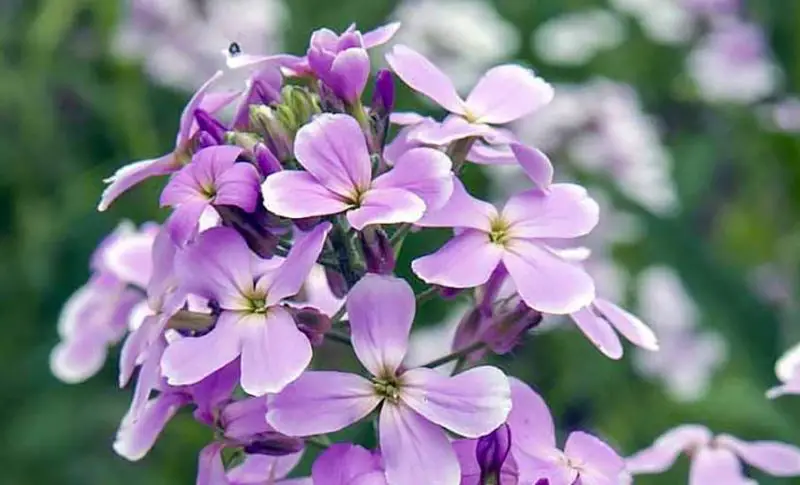
Sweet rocket is a fragrant, old-fashioned flower that releases its strongest scent in the evening. Blooming from April to July, its clusters of pink, purple, or white flowers attract butterflies and other nighttime pollinators. It grows best in USDA zones 4-8, preferring full sun to partial shade.
To care for sweet rocket, plant it in well-drained soil and water regularly. Deadheading spent blooms can extend the flowering period, and in some regions, this biennial may reseed itself naturally for blooms in future seasons.
Tickseed (Coreopsis spp.)
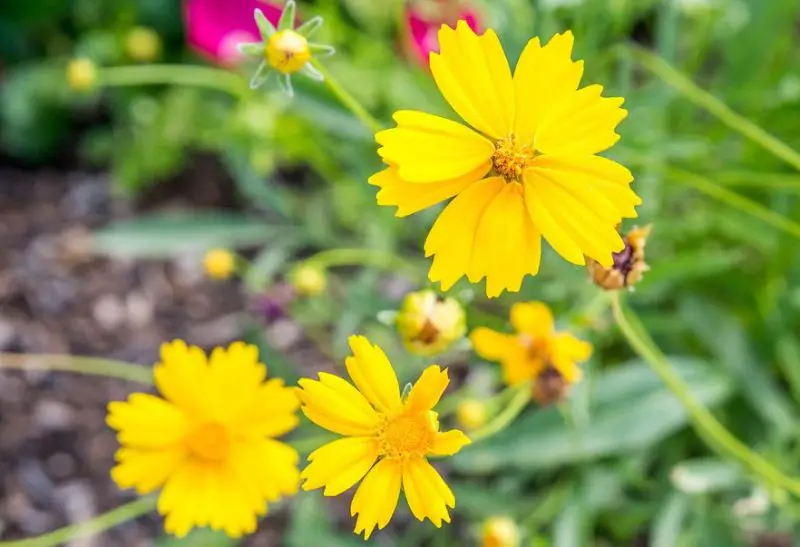
Tickseed is a butterfly-friendly perennial that produces bright, daisy-like flowers from early summer into fall. Available in shades of yellow, orange, pink, and red, it thrives in USDA zones 4-9 and can tolerate a variety of soil conditions.
This low-maintenance plant benefits from deadheading to encourage prolonged blooming. It requires minimal watering once established and grows well in sunny garden beds, borders, and wildflower meadows. Tickseed is an essential addition to any butterfly garden.
Butterfly Bush (Buddleja davidii)
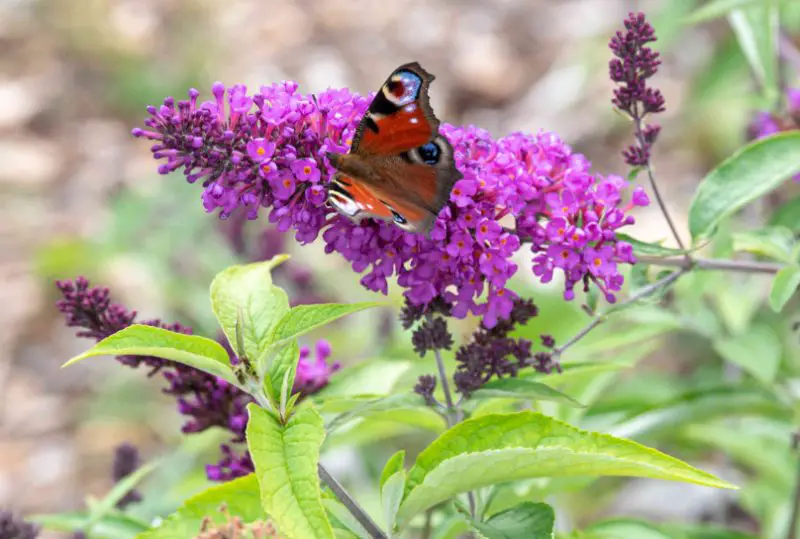
The butterfly bush is a fast-growing, deciduous shrub known for its cone-shaped clusters of fragrant, colorful flowers. It blooms from summer to fall and attracts butterflies, bees, and hummingbirds with its abundant nectar. This hardy plant thrives in USDA zones 5-9 and prefers full sun with well-draining soil.
Caring for a butterfly bush is easy—it requires occasional pruning to encourage new growth and maintain shape. It is drought-tolerant once established and benefits from regular deadheading to promote continuous blooming. Avoid overwatering, as it prefers slightly dry conditions.
Marigolds (Tagetes spp.)
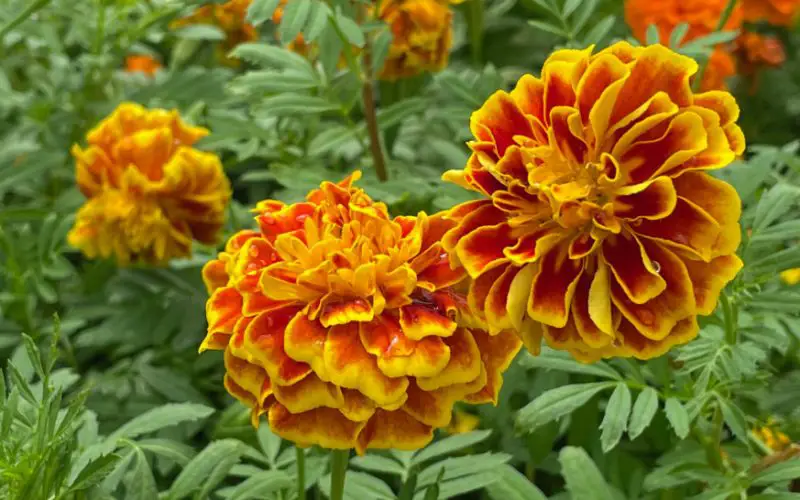
Marigolds are bright, hardy flowers that add vibrant colors to any garden while naturally repelling pests. Their rich nectar attracts butterflies and bees, making them a favorite for pollinator-friendly gardens. These flowers thrive in USDA zones 2-11, enjoying full sun and well-drained soil.
To care for marigolds, regularly deadhead spent blooms to encourage continuous flowering. They require minimal watering, as they tolerate drought well. Avoid excess moisture to prevent root rot, and plant them in a sunny location for best results.
Salvia (Salvia spp.)
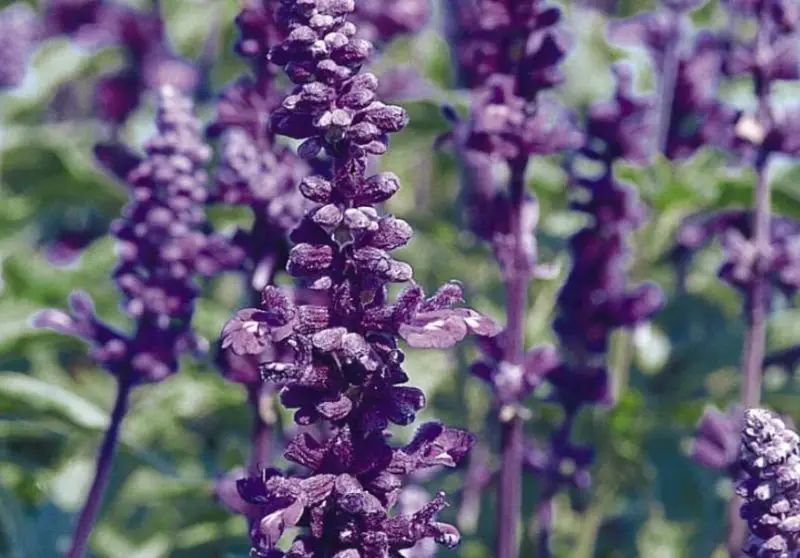
Salvia, also known as sage, is a favorite among butterflies and hummingbirds due to its rich nectar. This perennial plant produces tall spikes of vibrant flowers in shades of purple, blue, red, or pink. It thrives in USDA zones 5-10, preferring full sun and well-drained soil.
Caring for salvia is simple—it requires occasional pruning to maintain its shape and encourage blooming. It is drought-tolerant once established and benefits from deadheading to prolong flowering. Salvia is resistant to pests and diseases, making it an easy-to-grow choice for pollinator gardens.
Sunflowers (Helianthus annuus)
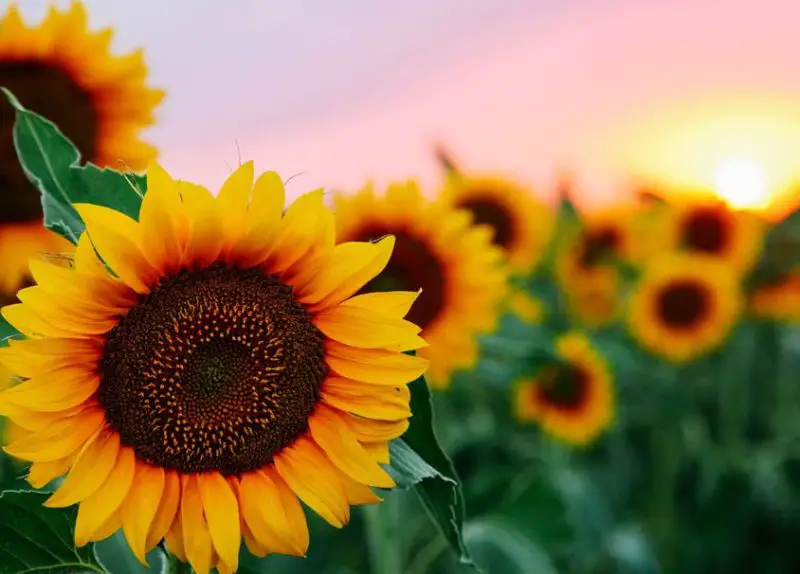
Sunflowers are known for their large, cheerful blooms that provide nectar for butterflies and seeds for birds. Their tall stalks and broad leaves also serve as food sources for caterpillars. They grow best in USDA zones 4-9, thriving in full sun and fertile, well-draining soil.
To care for sunflowers, plant them in a sunny spot and provide occasional deep watering. They benefit from staking if grown in windy areas. Deadhead spent flowers to prolong blooming, or let them dry on the stem for seed harvesting.
Buttonbush (Cephalanthus occidentalis)
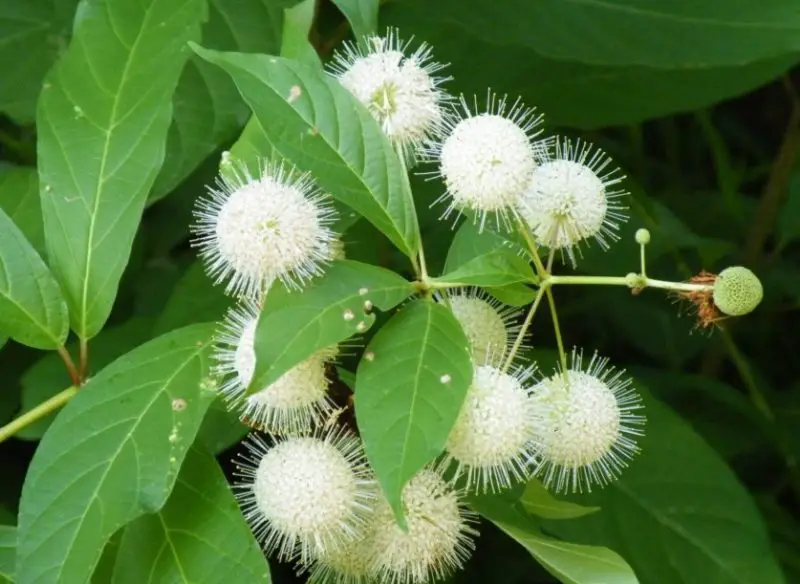
Buttonbush is a native North American shrub with unique white, globe-shaped flowers that attract butterflies. It thrives in wetlands and along riverbanks, making it an excellent choice for moist environments. This plant grows well in USDA zones 5-10 and prefers full sun to partial shade.
Buttonbush requires minimal care once established, as it tolerates wet soils and occasional flooding. Prune it in early spring to shape the plant and remove dead wood. It is highly resistant to pests and diseases, making it a low-maintenance option for butterfly-friendly gardens.

